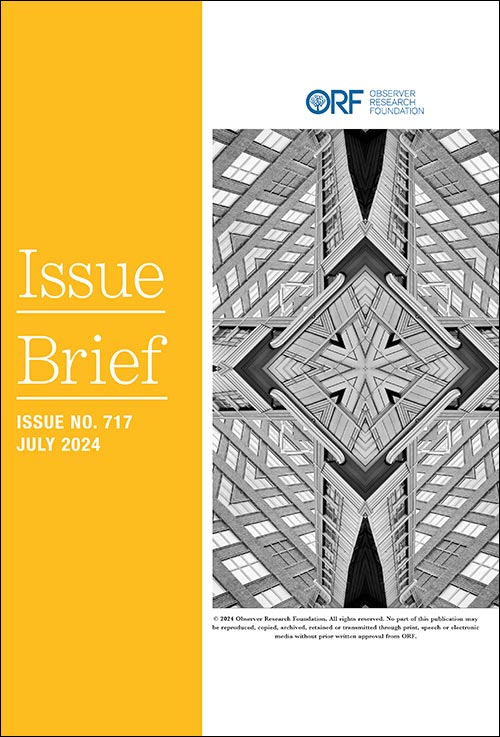
Australia released its first National Defence Strategy (NDS) on 17 April 2024 following the Defence Strategic Review 2023, which mandated the issuance of a biennial NDS. The NDS was accompanied by the Integrated Investment Programme (IIP) 2024 to ensure that funding plans are optimally synchronised with the strategy that includes capability priorities, force posture and structure, defence acquisitions and industry, recruitment, and international engagement. While the NDS highlights Australia’s engagements at the global and regional (Indo-Pacific) levels, it focuses on Australia’s primary area of military interest which covers the Northeast Indian Ocean through maritime Southeast Asia into the Pacific, including northern approaches.
The new direction and approach
The NDS stresses a move to a new concept of national defence, wherein a strategy of denial will be the primary strategic objective. Deterrence is indicated as a subset of this strategy, with other pillars being :(a) prevent coercion (b) support regional security and prosperity and (c) uphold a favourable regional strategic balance. The guiding concept for the Australian Defence Forces (ADF) will shift from a balanced force meant for a range of contingencies to an integrated, focused force designed to address the “most challenging strategic environment since World War II.” Capability priorities and capacity additions have been planned in line with these objectives. Range and lethality have been accorded the highest priority, with a substantial increase in ADF’s ability to operate from northern bases.
With recent bilateral and trilateral security arrangements in the Western Pacific, involving the United States (US), Japan, Australia, the Philippines, the UK and the Republic of Korea, a new alliance framework is rapidly evolving, and the NDS not only connects with this process but accelerates it.
Deterrence by denial is the strategy of choice for Australia, given that a strategy of deterrence by punishment (while holding a credible threat of retaliation) is not feasible in the foreseeable future. Even when the NDS is implemented in full, the ADF will remain a relatively small force. Further, this denial strategy can only be executed in a strong alliance with the US, and coordination with other alliance partners. Unsurprisingly therefore, AUKUS is a strong component of the strategy, with details on the three phases of the AUKUS submarine pathway (AUKUS pillar 1) as well as a focus on new and disruptive technologies, capabilities, industrial base, and trilateral export license-free environment through this collaboration (AUKUS pillar 2). At the core of the NDS is the concept of collective security, and it highlights that “The defence of Australia lies in the collective security of the Indo-Pacific region.” Cooperation with the United Kingdom (UK), Japan, and New Zealand is also prioritised towards these objectives. With recent bilateral and trilateral security arrangements in the Western Pacific, involving the United States (US), Japan, Australia, the Philippines, the UK and the Republic of Korea, a new alliance framework is rapidly evolving, and the NDS not only connects with this process but accelerates it. The Quad finds a passing mention and India is indicated as a “top-tier security partner.” It implies that while India may not form part of the emerging ‘hard-power deterrence alliance’, its support in other areas and non-obstructionist approach to this framework is valuable.
China: The primary concern
Unlike the US Indo-Pacific Strategy 2022, the NDS avoids direct references to China in an adversarial context and mentions it only from the viewpoint of the larger US-China strategic competition and the Chinese coercive actions in the region. However, the text establishes the causal relationship between China and the rapid deterioration in the security environment in the primary area of military interest for Australia. It is fully aligned with the US strategy in the region, and it is evident that the strategy of denial is targeted primarily at China. The integrated, focused force is designed to deter China, and respond effectively—in partnership—if this deterrence fails. Power projection, sustenance, and lethality will form the backbone of this joint deterrence with the US and other partners. Most of the acquisition plans indicated in the NDS highlight the induction of US platforms and equipment to strengthen interoperability and joint missions. Co-development, co-production and co-sustainment with the US are also stressed in the strategy.
The NDS includes the assessment that the US-China dialogue is proving to be useful, particularly in avoiding any miscalculation. It stresses that Australia will raise issues with China as required, but also pursue a defence dialogue.
Most of the acquisition plans indicated in the NDS highlight the induction of US platforms and equipment to strengthen interoperability and joint missions.
China has and will continue to criticise this strategic approach as a ‘Cold War mentality’ and ask some others to adopt its ‘win-win’ strategy instead. At the same time, China will seek new instruments to respond to the emerging alliance framework.
Maritime focus
As an island nation, the ADF has historically focused on maritime and naval capabilities. The NDS, however, seeks to take these to the next level and become a meaningful contributor to the China-facing capabilities architecture. The total funding plan of about US $765 billion for the next 10 years has the highest allocation for the maritime domain at 38 percent, with capability enhancements planned in undersea warfare, sea denial, localised sea control, and amphibious operations. A major boost is also planned for naval shipbuilding, especially at Osborne Shipyard in southern Australia and Henderson Shipyard in western Australia. Expeditionary air operations, long-range ISR, and strike capabilities are planned for the Air Force, with priority accorded to striking maritime targets at long ranges. Acquisition of littoral manoeuvre capability for the Army is planned in conjunction with heavy and medium landing craft, to enable deployment and sustenance of land forces in the primary area of interest. The development of Cocos (Keating) Island to support large aircraft operations is also planned.
Acquisition of littoral manoeuvre capability for the Army is planned in conjunction with heavy and medium landing craft, to enable deployment and sustenance of land forces in the primary area of interest.
The maritime focus is aligned with the objective of collective deterrence against China. The requisite capabilities for this deterrence by denial will take time to fructify but the strategy seeks to get the fundamentals in place for a gradual improvement in Australia’s ability to secure its interests by contributing meaningfully to the alliance framework.
Conclusion
Following up on the Defence Strategic Review, Australia’s NDS 24 seeks to adapt to the new (and dangerous) security environment, discard ‘strategic ambivalence’ and complacency, and move decisively to strengthen its defence and security. The strategy of denial, with collective deterrence as a central theme, is the new guiding concept for ADF of the future. It seeks to prepare for scenarios involving hostile or coercive actions by China in the region, or in the worst case actions directly against Australia. It, however, leaves the door open for a dialogue with China (in coordination with the US) to reduce tensions, risks, and uncertainty. Through a strong alliance with the US and other partners, it aims to be a major contributor to deterrence against China and towards maintaining a favourable balance of power in the eastern Indo-Pacific. In doing so, it also accelerates the rapidly emerging alliance framework in the western Pacific.
Girish Luthra is a Distinguished Fellow at the Observer Research Foundation
The views expressed above belong to the author(s). ORF research and analyses now available on Telegram! Click here to access our curated content — blogs, longforms and interviews.




 PREV
PREV


.png)